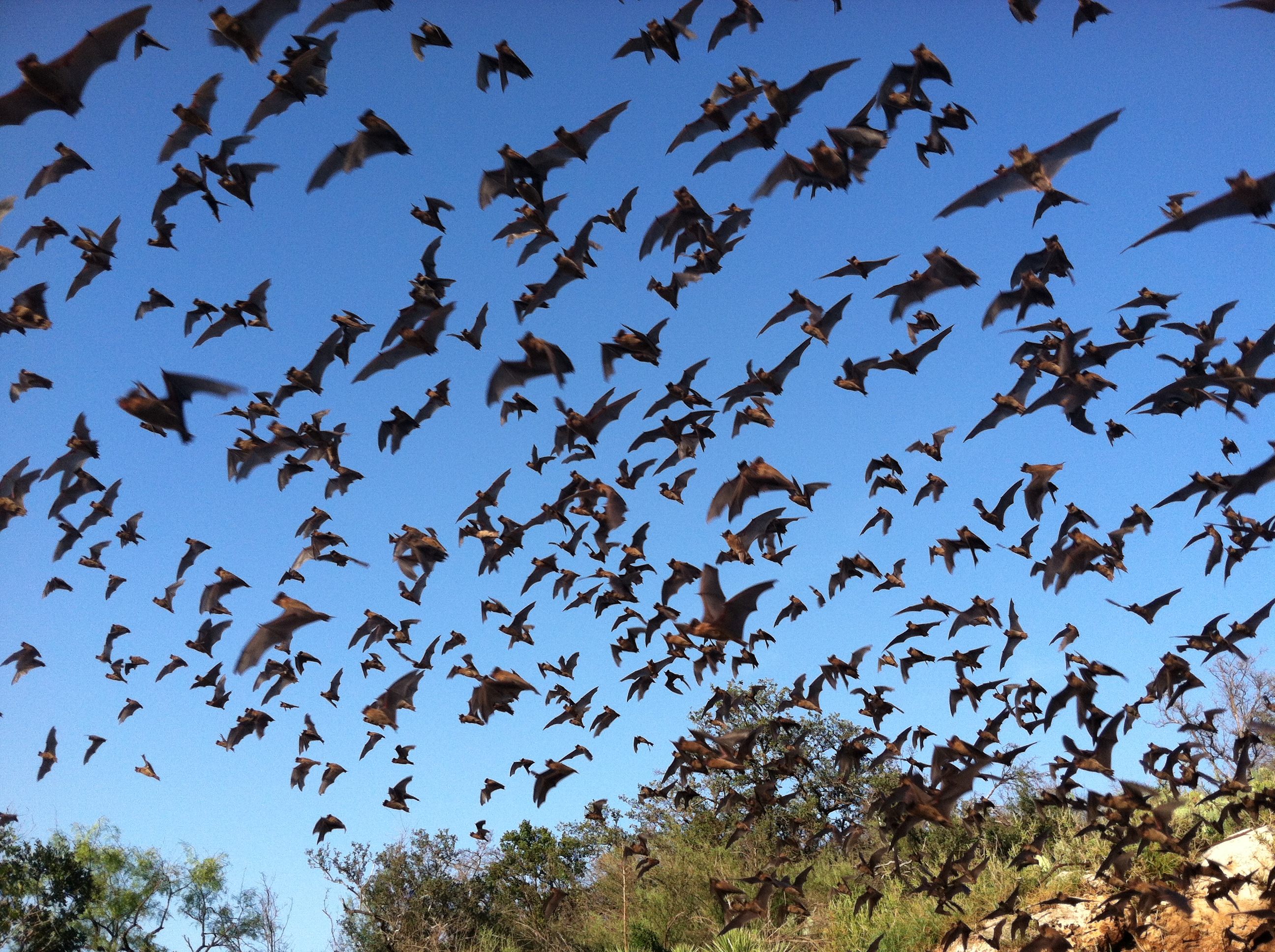Mavericks Of The Bat World
Mexican free-tailed bats engage in aerial acrobatics reminiscent of the jet maneuvers in “Top Gun.”

Mexican free-tailed bats stream into the sky outside of Davis Cave, in Texas, on July 22, 2013. Credit: USFWS/Ann Froschauer
As evening fell on a sweltering July day in Texas, thousands of migratory Mexican free-tailed bats were stirring within Davis Cave, where they live during the spring and into fall. At around 7 o’clock, they began to emerge—just a few at first, then a surge—to stream into the darkening blue sky. It takes several hours for the entire colony—about half a million bats—to emerge for their nightly feeding during which they fan out across central Texas to pluck cotton bollworm moths and other agricultural pests from the air.
Ann Froschauer, a public affairs specialist with the U.S. Fish and Wildlife Service, photographed several waves of these furry fliers while volunteering on a research trip with Boston University’s Kunz Bat Lab, which studies bat flight behavior (as well as white-nose syndrome). Mexican free-tailed bats are aerial acrobats that can reach heights of 10,000 feet while hunting for prey. (Froschauer describes them as the “Mavericks of the bat world,” with a nod toward Tom Cruise’s character in Top Gun.) During “emergence” from the cave, as their nightly routine is called, the bats fly in a well-coordinated column. “It looks like a ribbon,” says Froschauer, and “if there’s a tree, some go above it, some may go to the left, but then they come back together.”

For a sense of what the airborne milieu is like, Nate Fuller, a researcher at the Bat Lab, paints the following picture: “Imagine yourself in a group of people. You’re running in the same direction, but you can’t see anything because there are people all around you. You can’t hear anything because everyone is screaming. And you’re going in one direction because you want to get away from where you just were.” Bats somehow manage to navigate the crowd without descending into chaos.
Boston University engineers and computer scientists are working with biologists from the Bat Lab to better understand bat flight behavior, which could inform the design of unmanned aircraft, among other applications. Indeed, BU researchers are mapping bat flight patterns in 3D space to learn how the animals steer through their environment and avoid major collisions. Such insight could lead to new ways of developing unmanned aircraft with unprecedented agility, says John Baillieul, an engineering professor and director of Boston University’s Intelligent Mechatronics Lab, who’s work is funded in part by the Office of Naval Research. (Hear more about the work in this video from BU.)
Whatever we learn from bats will likely need to be simplified for unmanned vehicles, however. “It’s something that is good to aspire to,” says Fuller, “and we can aim a little lower based on their inspiration.”
Becky Fogel is a newscast host and producer at Texas Standard, a daily news show broadcast by KUT in Austin, Texas. She was formerly Science Friday’s production assistant.